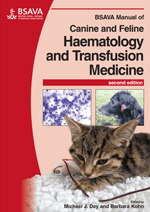
Full text loading...

Antibody and/or complement-mediated destruction of circulating red blood cells is known as immune-mediated haemolytic anaemia. This chapter covers clinical signs; diagnosis; treatment and prognosis.
Immune-mediated haemolytic anaemia, Page 1 of 1
< Previous page | Next page > /docserver/preview/fulltext/10.22233/9781905319732/9781905319732.6-1.gif

Full text loading...






